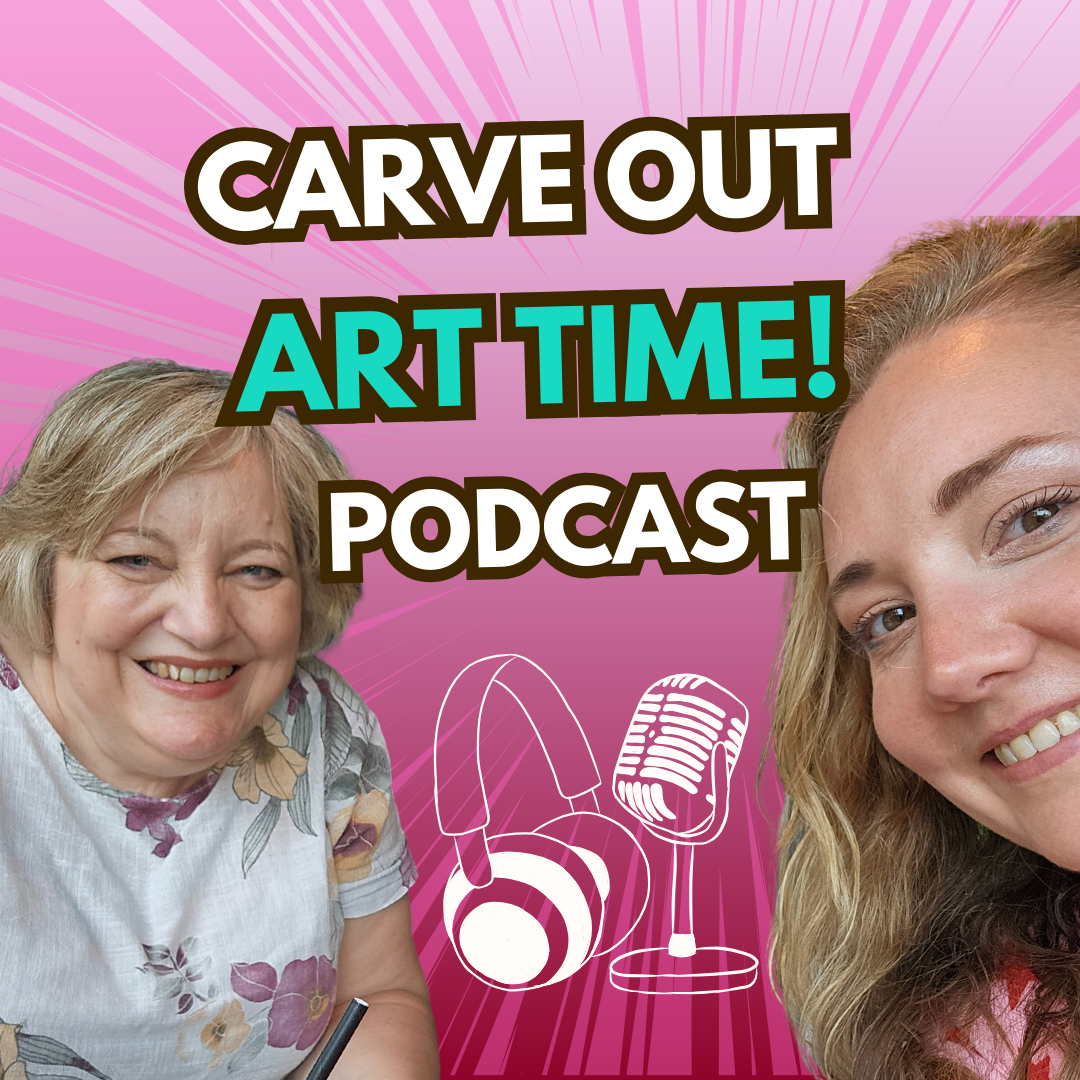
Carving Out Creative Time in a Busy World
Share
Today, I want to share some personal insights from the above podcast episode where Ruth and I dove deep into the challenges and triumphs of balancing our creative pursuits with life's many demands. Whether you're a budding artist or a seasoned professional, I believe everyone can benefit from these reflections and practical tips on how to carve out precious creative time in a busy world.
Personal Stories of Balancing Art and Life
Balancing art with daily responsibilities is something I know all too well. Finding uninterrupted time for creativity can be a challenge. Teaching classes and preparing for workshops often pulls me away from my own artwork. I remember days when I began my creative journey on my kitchen table before moving to a small bedroom studio. Each step, however humble, underscored the importance of dedicated creative time and space.
Ruth, who has now left her full-time IT job to pursue art full-time, shares this sentiment. Her routine whilst at work involved snatching moments of creativity in mornings and weekends. Her disciplined approach, even if it's just for short bursts, ensured she stays connected to her art.
Creative Routines and Overcoming Obstacles
One major takeaway from our discussions is the importance of establishing a routine that works for you. While I prefer starting a bit later in the morning, Ruth finds early morning light most conducive for her work. The key is consistency and finding those pockets of time, no matter how small, to engage with your art.
In my practice, having an organized workspace minimizes downtime. Simple habits like setting up a stay-wet palette or keeping project colours together help me dive straight into painting without the hassle of setting up and cleaning every time.
Studio Time vs. Creative Time: Navigating Spaces and Practices
Over the years, I've learned that having a dedicated studio space can significantly boost productivity. But this wasn't always the case for me. I started on a kitchen table and then moved to a small bedroom studio. Adapting to such constraints taught me the value of making do with what you have.
I've heard from many students that even a small corner of the living room or a section of the kitchen table can become a creative haven. The essential part is to have a space that signals your brain that it's time to create.
The Importance of Inspiration and Creative Time
Creativity is not confined to the studio. Sometimes, the best ideas come when we're away from our usual workspaces. I believe strongly in the concept of "Artist
Dates" from Julia Cameron's The Artist's Way. Setting aside time each week to do something that fuels your creativity—whether it's visiting a gallery, walking in nature, or experimenting with new materials—can be incredibly rejuvenating.
An artist's date is about treating yourself and connecting with your creative side. It's a way to reignite your passion and find fresh inspiration for your work.
Observational Skills and Artistic Growth
Observation has played a crucial role in my artistic growth. Over the years, I've sharpened my ability to notice the subtle details in everyday life. From the way light hits a tree to the textures in nature, these observations feed into my art. I've found that even teaching workshops enhances this skill, as it allows me to see how different people perceive and interpret the world around them.
Colour, Texture, and Personal Expression
Ruth and I have different approaches to colour and texture in our work. While I gravitate towards organic shapes and lines, Ruth's work is vibrant and patterned, influenced by her background in textile design. These differences underline the importance of finding and embracing your unique style.
Concluding Thoughts and Takeaways
Our discussions on the podcast have made me reflect on my own routines. Although I have set studio days, like Mondays and Fridays, I often find myself pulled away by other tasks. Ruth's method of fitting in shorter, consistent sessions has inspired me to rethink my approach.
So here's my takeaway: Whether it's carving out short sessions each day or setting aside dedicated studio days, it's crucial to find a rhythm that works for you. This regularity not only helps maintain your creative flow but also makes your art practice more sustainable and fulfilling.
I hope these insights resonate with you and inspire you to carve out and protect your creative time. Whether you're just starting or are a full-time artist, the journey is about finding what works best for you and making your creativity a priority.
I'd love to hear about your experiences. How do you balance your creative time? What challenges do you face, and how do you overcome them? Share your stories, and let's continue this conversation.
Remember, creativity is a vital part of who we are, and making time for it is one of the best investments we can make in ourselves.
Until next time, Debs
I hope you enjoyed reading this blog or watching the Podcast.
Interested in learning more? I have a new free mini-course Embracing Imperfection: A Guide to Painting Loose where you can get a peek inside the Art Hub Community a new online community setup by myself and Ruth (my Podcast co-host) to sign up click HERE
We will be launching the community for a September start so I'll keep you in touch on my mailing list, there's a free live at the end of August for you to look around, you can also Contact Me for more details.
